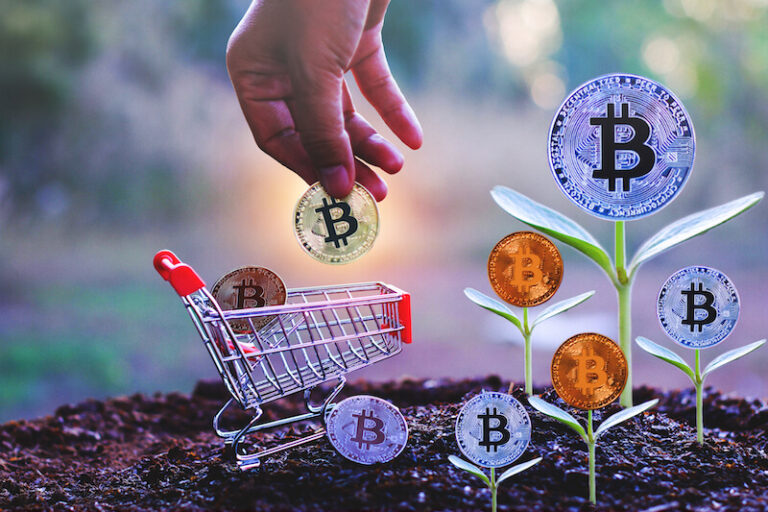
LP Tokens - What are They and What Should YOU Know!
- Jakob Brezigar
- Last updated: 04.April 2024
- Reading time: 7 min
Liquidity Provider (LP) tokens have emerged as a critical component within the sprawling ecosystem of Decentralized Finance (DeFi). For the uninitiated, these tokens can be likened to a proof of deposit when one contributes to a liquidity pool on a decentralized exchange (DEX) using the Automated Market Maker (AMM) model.

Table of Contents
What are LP tokens?
LP tokens (Liquidity Provider tokens) are digital tokens received by liquidity providers when they deposit assets into a liquidity pool. They represent the provider’s share in the pool and can be redeemed for the original assets.
How do LP tokens generate value?
LP tokens can accrue value from trading fees accumulated in their corresponding liquidity pool. As users trade within the pool, transaction fees are collected and proportionally distributed to LP token holders.
What are the risks associated with LP tokens?
Holding LP tokens can expose providers to risks such as impermanent loss, where the value of tokens inside the pool may diverge from those outside, and potential pool vulnerabilities or smart contract failures.
Essentially, when a user deposits their cryptocurrency into liquidity pool, they receive LP tokens. Think of these tokens as a “receipt” that showcases the individual’s stake in that specific pool. This concept is akin to depositing money in a bank and receiving a deposit slip. The significant difference is that in the DeFi space, this process is decentralized and algorithm-driven.

DeFi and Automated Market Makers
Decentralized Finance’s meteoric rise can trace a significant part of its success to Automated Market Makers (AMMs) as well as traditional market makers. Unlike conventional market setups where buyers and sellers directly interact, automated market maker allows users to transact with a smart contract. This innovation eliminates the need for order books commonly used in traditional exchanges.
Instead, through complex algorithms, these AMMs automatically adjust prices based on the laws of supply and demand, ensuring crypto liquidity, and guaranteeing that there is always a counterparty for each trade. This self-regulating mechanism makes them stand out and has opened doors to a more decentralized way of trading.
LP Tokens and Crypto Liquidity Providers
In the grand scheme of AMM-based DEXs, Liquidity Providers (LPs) take center stage. They deposit their crypto assets into the pool, ensuring trades can happen by providing the required liquidity. The act of depositing assets may sound mundane, but it underpins the entire system, ensuring users can trade seamlessly.
As a token of appreciation for their essential role, these liquidity providers receive transaction fees, often presented as a form of interest. The LP tokens serve as a reward for their contribution and can be exchanged back for their proportionate share of the pool’s assets.
Do LP Tokens Have Value?
The value of LP token isn’t just symbolic. They are intricately connected to the total assets held within the associated liquidity pool. For instance, if a pool’s assets grow in value due to accumulated trading fees or appreciation of the assets within, the LP tokens correlating to that pool witness a parallel appreciation.
These staked tokens aren’t just markers; they have tangible value and can be a lucrative investment for those who understand their dynamics. In the broader DeFi ecosystem, liquidity provider tokens serve as an essential metric; the LP tokens determine the proportion of assets deposited by a provider, and thus, their claim on transaction fees.
Unlike centralized exchanges where the internal workings are obscured, in DeFi, LP tokens work transparently. By providing liquidity, individuals receive these tokens as proof of their stake. LP tokens act as both a receipt and a claim to a portion of the profits.
Furthermore, they can be used to participate in other token-based activities, solidifying their role as a versatile and liquid crypto asset in the decentralized world.

Who is Liquidity Provider?
Liquidity Providers can be any individuals or entities that channel their assets into DEX liquidity pool. Their participation is a cornerstone of decentralized exchanges. By pooling their resources, they ensure a continuous flow of assets, allowing users to trade without hitches.
In the ever-evolving world of DeFi, LPs not only get transaction fees as a reward but also play a crucial role in stabilizing and ensuring the efficiency of decentralized trading platforms.

Liquidity Provider Tokens (LP tokens) That Companies Like Orcabay can Utilize
Liquidity Provider Tokens (LP tokens) offer companies like Orcabay a unique avenue to enhance their market presence and liquidity depth. By contributing to a liquidity pool, Orcabay receives LP tokens, which represent its share in the pool. This mechanism incentivizes Orcabay to provide liquidity by earning transaction fees proportional to its pool share. For instance, Orcabay’s participation in a major Ethereum-based liquidity pool not only increased the pool’s stability but also augmented Orcabay’s revenue through fees collected on trades. However, the potential harm lies in impermanent loss, where the value of deposited assets diverges from their market value, posing a risk to Orcabay’s investment. This dual-edged nature highlights the importance of strategic management and market analysis in leveraging LP tokens effectively.
At its core, AMMs can’t function in a vacuum. They need assets to facilitate and ensure trades. This is where LP tokens come into play. Representing the assets in these liquidity pools, LP tokens are a tangible connection between liquidity provider and AMMs. Without liquidity providers and the subsequent issuance of LP tokens, AMMs would grind to a halt, making this relationship symbiotic.
In the realm of Decentralized Finance (DeFi), provided liquidity is the lifeblood that ensures smooth trading and robust market stability. Here, LP tokens, short for Liquidity Provider tokens, play an indispensable role.
When a liquidity provider deposits their assets into a decentralized exchange’s liquidity pool, they receive these LP tokens as a representation of their stake. These liquidity provider LP tokens not only act as a proof of contribution but also bolster the available liquidity on the platform. As more liquidity providers engage and obtain LP tokens, the overall volume of assets in DeFi platforms increases.
This surge in assets, symbolized by the circulation of liquidity provider token, fosters a conducive environment where users can execute trades with minimal slippage, ensuring that DeFi platforms remain efficient, reliable, and resilient against market volatility.

At its essence, liquidity pools are reservoirs of tokens secured in a decentralized smart contract. Their primary function is to provide the necessary liquidity for DEXs to operate. LP tokens represent these deposits and guarantee that a consistent volume of assets is available for trades, ensuring market stability. The continued influx and outflow of assets, represented by LP tokens, make decentralized exchanges attractive and trustworthy for users, setting the stage for a more democratized financial system.
But there’s more to LP tokens than just representing a stake in a liquidity pool. The DeFi landscape is vast, and LP tokens can also be utilized in yield farming endeavors. Yield farming, or liquidity mining, is a sophisticated strategy where users “farm” their tokens across various protocols to reap maximum rewards. By staking LP tokens on different platforms, liquidity providers don’t just earn from DEX transaction fees but can also pocket rewards from other DeFi protocols.

The process of yield farming using LP tokens has carved a niche within the DeFi ecosystem. It offers an avenue to potentially amplify returns. By strategically staking their LP tokens on chosen platforms, users can harvest additional rewards, often in the form of another cryptocurrency. This cyclical process of staking, earning, and restaking can lead to compounded returns, making it a popular strategy among seasoned DeFi enthusiasts.
Yield farming, a practice in which users stake assets to earn potential rewards, is inherently associated with several risks, especially when involving LP tokens or Liquidity Provider tokens. For starters, liquidity providers are exposed to impermanent loss when they deposit their assets to earn these LP tokens.
This means the value of their staked assets might decrease compared to holding them outside the liquidity pool. Additionally, the very nature of liquidity provider LP tokens ties them to the underlying assets in the pool. If these assets fluctuate wildly in value, it can further magnify the risks.
Furthermore, like all decentralized systems, there’s always the lurking danger of smart contract vulnerabilities, which can put staked assets at risk. Thus, while LP tokens offer lucrative opportunities, they are not devoid of challenges, and liquidity provider should approach yield farming with due diligence.
While liquidity pools serve as the bedrock of DEXs, they come with intricate challenges. Impermanent loss, for instance, is a situation where the value of tokens within a pool can depreciate compared to if they were held outside.
Furthermore, the inherent volatility of the cryptocurrency market means assets can witness rapid value fluctuations, adding layers of risk to liquidity providers’ stakes. Amidst these complexities, various types of liquidity pool tokens, such as balancer pool tokens, are emerging to address specific market demands. As these pool tokens interact within the overall liquidity pool, they contribute to the dynamic ecosystem of (limited) crypto liquidity pools.
The evolution and nuances of DeFi liquidity pools make it essential for participants to understand the unique mechanics of each (potentially locked) crypto liquidity pool. By doing so, they can navigate the intricacies and capitalize on opportunities while being aware of potential pitfalls.

Depositing assets into a liquidity pool in the DeFi realm yields LP tokens. These tokens are a testament to the user’s stake in that specific pool. The dynamics are straightforward: as the value of the pool’s assets varies, so does the worth of the LP tokens. They offer a fluid entry and exit mechanism, granting liquidity providers the liberty to strategize and optimize their investments based on market conditions.
Unlike centralized exchanges, DeFi protocols utilize these liquidity provider tokens to facilitate trades directly between users, sidestepping the traditional middlemen. When users provide liquidity, they’re essentially locking their crypto assets into a pool. This locked liquidity ensures that trades can be facilitated smoothly without significant price slippage.
As a reward for their service, liquidity provider often yield farm by staking their liquidity provider token to earn other tokens or incentives. These tokens can then be used within the DeFi protocol, or even transfer ownership, bestowing liquidity providers complete control over their stakes.
It’s this empowerment, combined with the ability to quickly adapt to market changes, that distinguishes LP tokens from other assets in the digital finance world.
Every investment avenue has its pitfalls, and LP tokens are no exception. Their value can swing downwards due to market volatility, and liquidity provider always runs the risk of impermanent loss, especially when the price of the deposited assets sees a drastic shift. Such risks necessitate a robust understanding of the market and careful strategizing.

The entire DeFi realm leans heavily on smart contracts. These are self-executing contracts with terms of the agreement written into code. While they are designed for infallibility, they’re still coded by humans, making them prone to errors or vulnerabilities. Any glitch or exploit in these contracts can lead to draining of liquidity pool or mismanagement of assets, causing potential losses for participants.

Several factors influence an LP token’s value. Primarily, it’s the total value of the assets in the corresponding liquidity pool and the number of LP tokens in circulation. A surge in the pool’s assets or an introduction of more assets can uplift the LP tokens’ value.
Conversely, if the assets within the pool depreciate, the LP tokens might see a downturn. Furthermore, the way LP tokens work in tandem with other tokens in the DeFi space plays a role. For example, liquidity provider LP tokens can act as a reflection of how crypto assets within a pool are performing. LP token holders, acting as liquidity providers, often have complete control over their contributions, which can influence the dynamics of the liquidity pool.
Lastly, it’s vital to recognize that liquidity provider tokens aren’t isolated; their interplay with other facets of the DeFi ecosystem means their value can be impacted by external shifts and trends.
In the vast realm of cryptocurrencies, security is paramount. Even then, breaches can lead to asset losses or thefts. Being digital assets, LP tokens, or liquidity provider tokens, are not exempt from potential hacks. Their inherent nature, which involves providing liquidity in exchange for transaction fees accumulated, makes them prime targets for malicious actors.
s these tokens work to facilitate seamless transactions and stabilize token prices, any breach can have cascading effects on the broader ecosystem. This underscores the importance of being well-acquainted with security protocols and entrusting assets to reputable platforms.
Ensuring the safety of LP tokens is not just about individual asset protection but also about maintaining the overall integrity of liquidity provision in the decentralized finance space.

LP tokens have undeniably played a transformative role in the evolution of the DeFi ecosystem. Their design and functionality have made them pivotal in the way liquidity tokens facilitate transactions within a crypto liquidity pool. By understanding how LP tokens work, individuals gain access to a realm of further rewards and the dynamism of the crypto market.
These tokens not only offer flexibility and opportunities for liquidity provider, such as participating in other token-based activities or even venturing into crypto loans, but they also represent a tangible reflection of their stake in the DeFi landscape.
Nonetheless, while they present an array of benefits, it’s imperative to recognize and assess the associated risks. A holistic and nuanced comprehension of both the rewards and potential pitfalls will empower participants to navigate more confidently and make informed decisions in the burgeoning world of decentralized finance.

Jakob Brezigar
Jakob, an experienced specialist in the field of cryptocurrency market making, boasts an extensive international presence. With Orcabay, he has skillfully managed major operations and deals for a wide array of global stakeholders.



